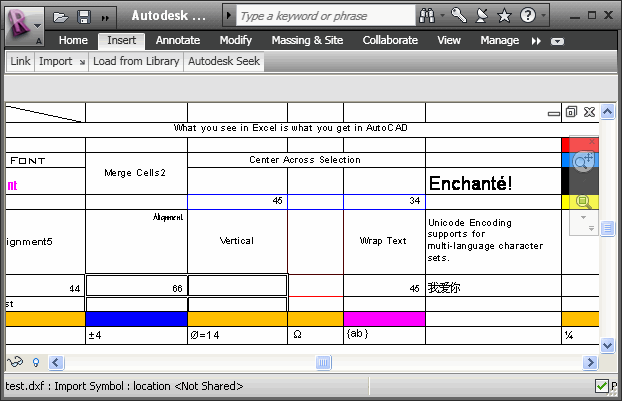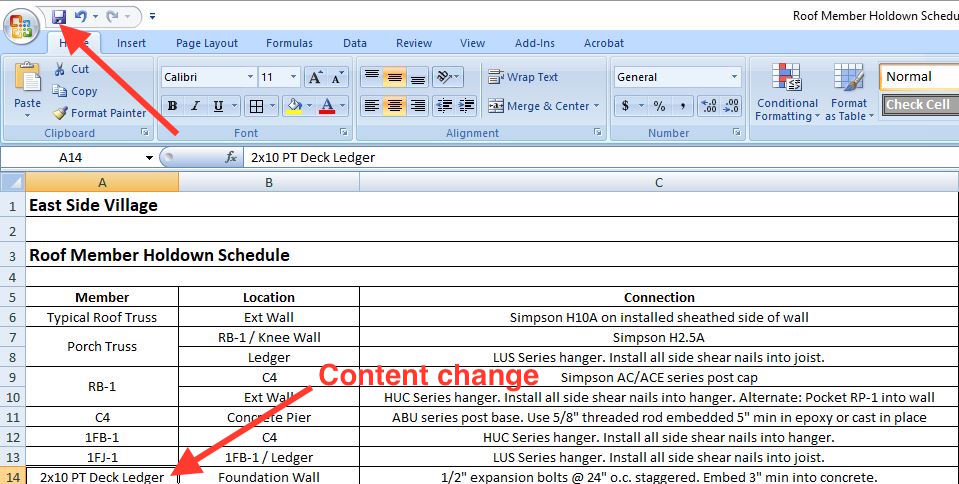Excel-to-Revit: A Game-Changing Process for Architectural Design - Revealing the Secrets
Presenting excel-to-revit, the game-changing operations that will certainly reinvent your layout procedure. With excel-to-revit assimilation, you can simplify your building style, unlock effectiveness, and make the most of collaboration within your team. Get all set to take your building style to the following degree with excel-to-revit!
The Power of Excel-to-Revit Combination

Think of the comfort of having the ability to modify and upgrade task information in Excel, and instantly see those changes reflected in your Revit version. Say goodbye to hands-on data access or tiresome updates. With Excel-to-Revit assimilation, you can save time and minimize mistakes by leveraging the power of Excel's functions and solutions to instantly produce exact data in Revit.
Not only does this assimilation enhance performance, but it additionally improves partnership among group participants. You can conveniently share Excel documents with colleagues, who can then import the information into their Revit models. This promotes a seamless exchange of information and makes certain that everyone is dealing with one of the most updated data.

Improving Building Style With Excel-To-Revit
Simplifying building style is simplified with making use of Excel-to-Revit (revit tool). With this powerful assimilation, you can enhance your workflow and conserve important time throughout the layout process. By leveraging the capacities of Excel and Revit, you can perfectly move information in between both systems, getting rid of the demand for hands-on information entry and lowering the risk of errors
Excel-to-Revit permits you to import and export data easily, allowing you to easily upgrade and modify your architectural layouts. You can create routines, compute quantities, and produce records in Excel, and then move that information directly right into your Revit model. This combination makes certain that your design info is constantly up-to-date and integrated, eliminating the need for hands-on updates and decreasing the possibilities of disparities.
By using Excel-to-Revit, you can likewise capitalize on the effective computational capabilities of Excel. You can do complex estimations, analyze data, and automate recurring jobs, all within Excel. With just a few clicks, you can import the outcomes back right into Revit, permitting you to make enlightened layout choices and enhance your architectural designs.
Unlocking Efficiency: Exploring the Excel-to-Revit Workflow
Maximize your productivity by perfectly integrating Excel and Revit for a more efficient operations. With the Excel-to-Revit operations, you can open a whole new level of efficiency in your architectural layout procedure. By making use of the power of Excel's information administration capacities and integrating it with the versatility and precision of Revit, you can improve your design procedure and conserve useful time.
One of the key benefits of this assimilation is the capacity to import and export information between Excel and Revit. This means that you can easily move job information, such as area routines or material quantities, from one software to the other, removing the requirement for hands-on data entry and decreasing the possibilities of errors. You can also develop custom formulas and estimations in Excel to automate recurring jobs and carry out complicated computations, which can then be effortlessly incorporated into your Revit versions.
Furthermore, the Excel-to-Revit process permits far better control and collaboration in between employee. With Excel functioning as a main information center, several employee can service different aspects of the project concurrently, upgrading and sharing details in real-time. This not just enhances communication yet also ensures that everybody is working with one of the most updated data, removing the risk of incongruities.
Optimizing Collaboration: Excel-to-Revit for Architectural Teams
By seamlessly integrating Excel and Revit, architectural teams can substantially boost collaboration and attain much more reliable layout end results. When using this powerful process, you can quickly move data in between Excel spread sheets and Revit designs, improving the design procedure and improving communication among team participants.
Moreover, by leveraging Excel's powerful estimation capacities, you can carry out complex estimations and analysis on your layout information, offering beneficial understandings and driving informed decision-making. This assimilation likewise allows you to export data from Revit to Excel, allowing you to produce comprehensive records, charts, and charts for presentations and evaluation. This collaborative operations promotes reliable communication and control among group members, as Excel acts as a main hub for information management and sharing.
General, by accepting the Excel-to-Revit operations, architectural groups can accomplish greater levels of partnership, efficiency, and precision in their design procedure. revit tools. This integration encourages teams to interact seamlessly, ensuring that every person is on the very same page and contributing to the success of the task
Unveiling the Keys of Excel-to-Revit Combination

One of the tricks of Excel-to-Revit integration try this site is the capacity to leverage the power of solutions and computations in Excel to drive parameters and create complicated geometries in Revit. You can link Excel spread sheets to Revit households, allowing you to input information straight right into the spreadsheet and have it immediately upgrade in the Revit version. This streamlines the style procedure and ensures accuracy and uniformity throughout the project.
One more key is the capacity to develop custom routines and reports in Excel, utilizing information removed from Revit. This enables you to assess and visualize task info in such a way that is not feasible within Revit alone. You can quickly produce amount liftoffs, price price quotes, and project timelines, providing important insights for decision-making and project management.
Furthermore, Excel-to-Revit combination enables efficient collaboration amongst group participants. Several individuals can deal with the exact same Excel spreadsheet at the same time, making it simpler to coordinate and track changes. You can also utilize Excel's commenting feature to provide feedback or communicate design revisions.
Verdict
By incorporating the power of Excel read this article and Revit, engineers can currently function a lot more effectively, save time, and produce far better layouts. Begin integrating excel-to-revit combination into your architectural layout procedure today and reinvent the method you work.
With simply a few clicks, you can import the results back into Revit, permitting you to make enlightened style decisions and optimize your building styles.
By utilizing the power of Excel's information monitoring abilities and integrating it with the flexibility and accuracy of Revit, you can enhance your design procedure and save valuable time.
By seamlessly incorporating Excel and Revit, architectural groups can substantially enhance collaboration and attain a lot more efficient layout results. When using this effective workflow, you can conveniently transfer go information between Excel spread sheets and Revit models, simplifying the style procedure and improving communication amongst team participants.Additionally, by leveraging Excel's effective computation capabilities, you can execute complex estimations and analysis on your layout data, giving important understandings and driving educated decision-making.